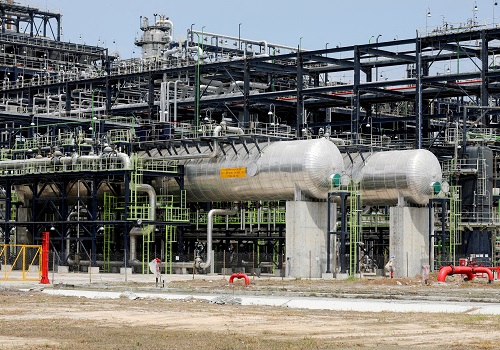Global coal demand expected to decline in 2026: IEA

Follow us Now on Telegram ! Get daily 10 - 12 important updates on Business, Finance and Investment. Join our Telegram Channel
After reaching an all-time high this year, global coal demand is expected to decline in 2026 by 2.3 per cent, said the latest edition of the International Energy Agency’s (IEA) annual coal market report on Friday -- the first time that the report has predicted a drop in global coal consumption over its forecast period.
Coal 2023 sees global demand for coal rising by 1.4 per cent in 2023, surpassing 8.5 billion tonnes for the first time. The global increase masks stark differences among regions.
Consumption is on course to decline sharply in most advanced economies in 2023, including record drops in the European Union (EU) and the US of around 20 per cent each.
Demand in emerging and developing economies, meanwhile, remains very strong, increasing by eight per cent in India and by five per cent in China in 2023 due to rising demand for electricity and weak hydropower output.
However, the report expects global coal demand to fall by 2.3 per cent by 2026 compared with 2023 levels, even in the absence of governments announcing and implementing stronger clean energy and climate policies.
This decline is set to be driven by the major expansion of renewable energy capacity coming online in the three years to 2026.
More than half of this global renewable capacity expansion is set to occur in China, which currently accounts for over half of the world’s demand for coal.
As a result, Chinese coal demand is expected to fall in 2024 and plateau through 2026. That said, the outlook for coal in China will be significantly affected in the coming years by the pace of clean energy deployment, weather conditions, and structural shifts in the Chinese economy.
The projected decline in global demand for coal -- which is currently the largest energy source for electricity generation, steelmaking and cement production, but also the largest source of carbon dioxide (CO2) emissions from human activity -- could mark a historic turning point.
However, global consumption is forecast to remain well over 8 billion tonnes through 2026, according to the market report.
To drive down emissions at a rate consistent with the goals of the Paris Agreement, the use of unabated coal would need to fall significantly faster.
‘’We have seen declines in global coal demand a few times, but they were brief and caused by extraordinary events such as the collapse of the Soviet Union or the Covid-19 crisis. This time appears different, as the decline is more structural, driven by the formidable and sustained expansion of clean energy technologies,” said Keisuke Sadamori, IEA Director of Energy Markets and Security.
“A turning point for coal is clearly on the horizon -- though the pace at which renewables expand in key Asian economies will dictate what happens next, and much greater efforts are needed to meet international climate targets.”
The report finds that the shift in coal demand and production to Asia is accelerating. This year, China, India and Southeast Asia are set to account for three-quarters of global consumption, up from only about one-quarter in 1990.
Consumption in Southeast Asia is expected to exceed for the first time that of the US and that of the EU in 2023.
Through 2026, India and Southeast Asia are the only regions where coal consumption is poised to grow significantly. In advanced economies, the expansion of renewables amid weak electricity demand growth is set to continue driving the structural decline of coal consumption.
Meanwhile, China, India and Indonesia -- the three largest coal producers globally -- are expected to break output records in 2023, pushing global production to a new high in 2023.
These three countries now account for more than 70 per cent of the world’s coal production. Global coal trade is expected to contract as demand declines in the years ahead.
However, trade will reach a new high in 2023, driven by strong growth in Asia.
Chinese imports are on track to reach 450 million tonnes, which is more than 100 million tonnes above the previous global record set by the country in 2013, while Indonesia’s exports in 2023 will be close to 500 million tonnes -- also a global record.
Vibhuti Garg, South Asia Director, IEEFA, said, “Renewable energy capacity additions may force global coal demand to peak this year, however, it’s not fast enough.
“The speed at which the decline happens depends on the ability of developed countries to support the developing world. Countries must find a way to move past phase-down and towards a complete phase-out.”












 320-x-100_uti_gold.jpg" alt="Advertisement">
320-x-100_uti_gold.jpg" alt="Advertisement">












